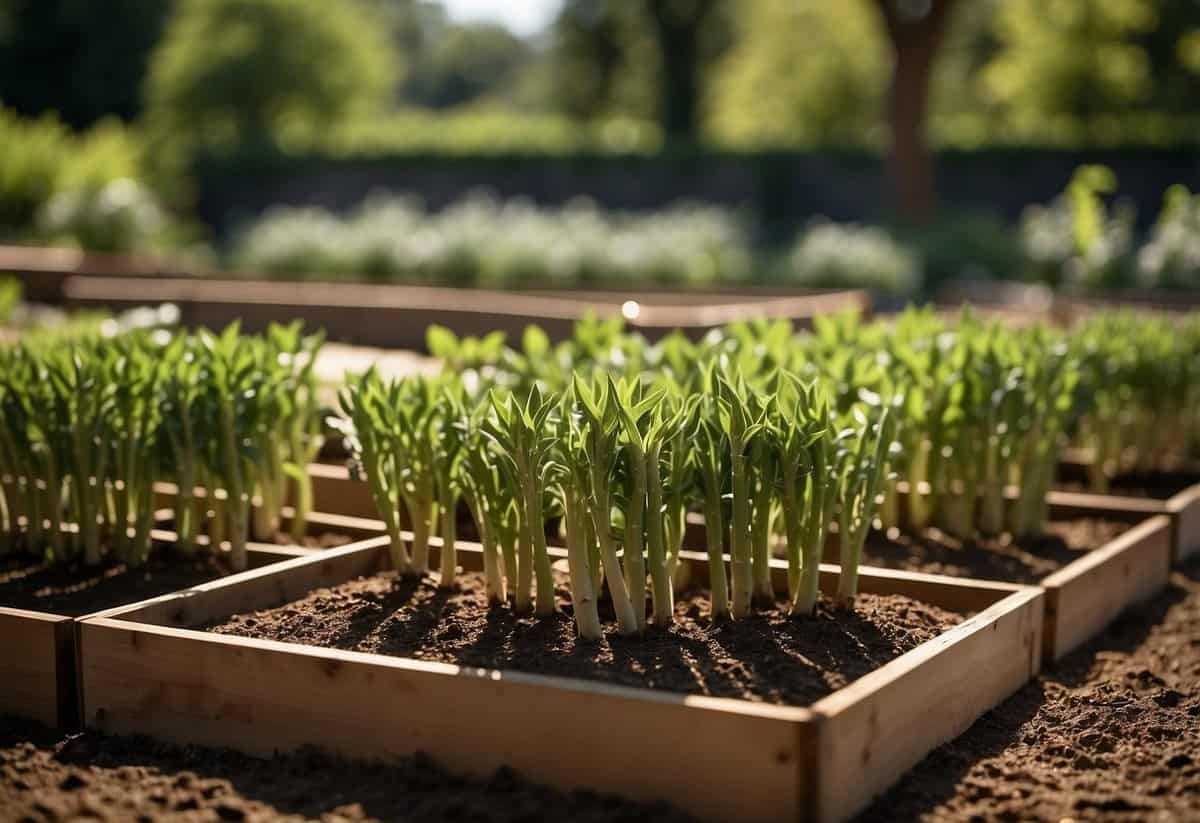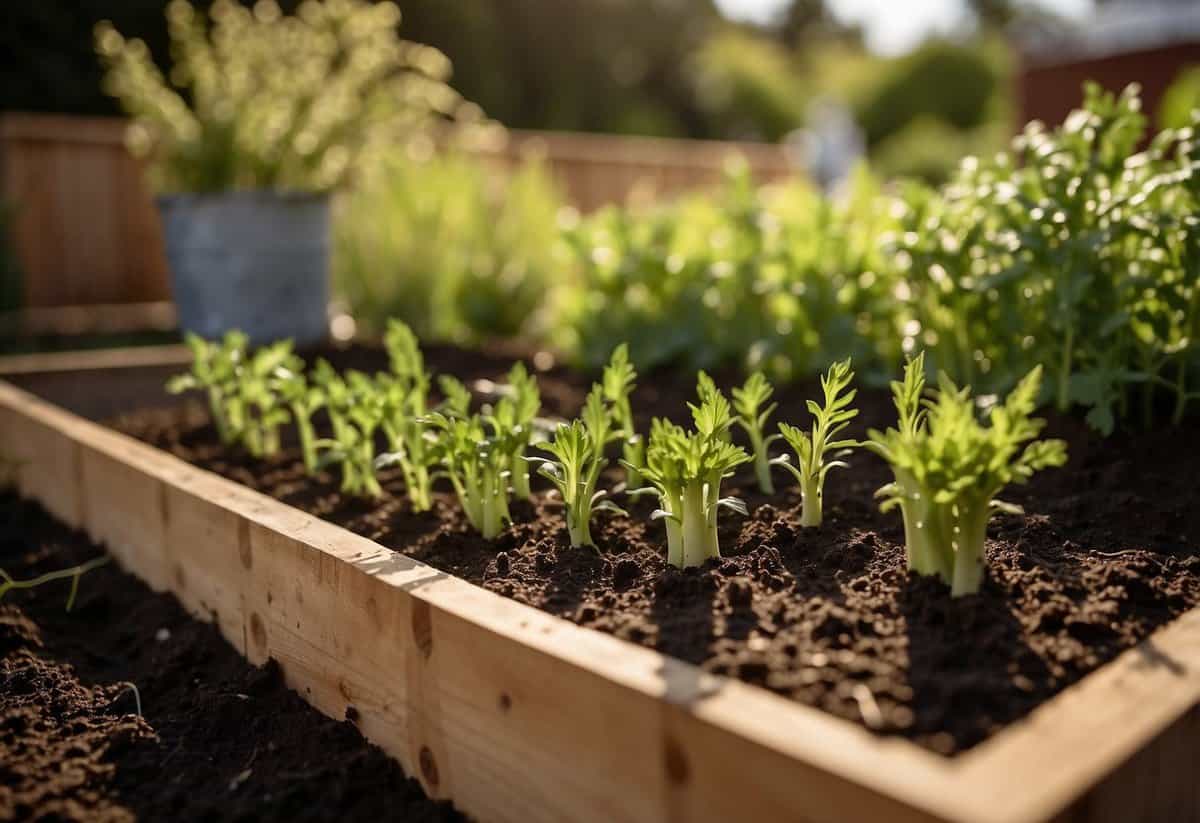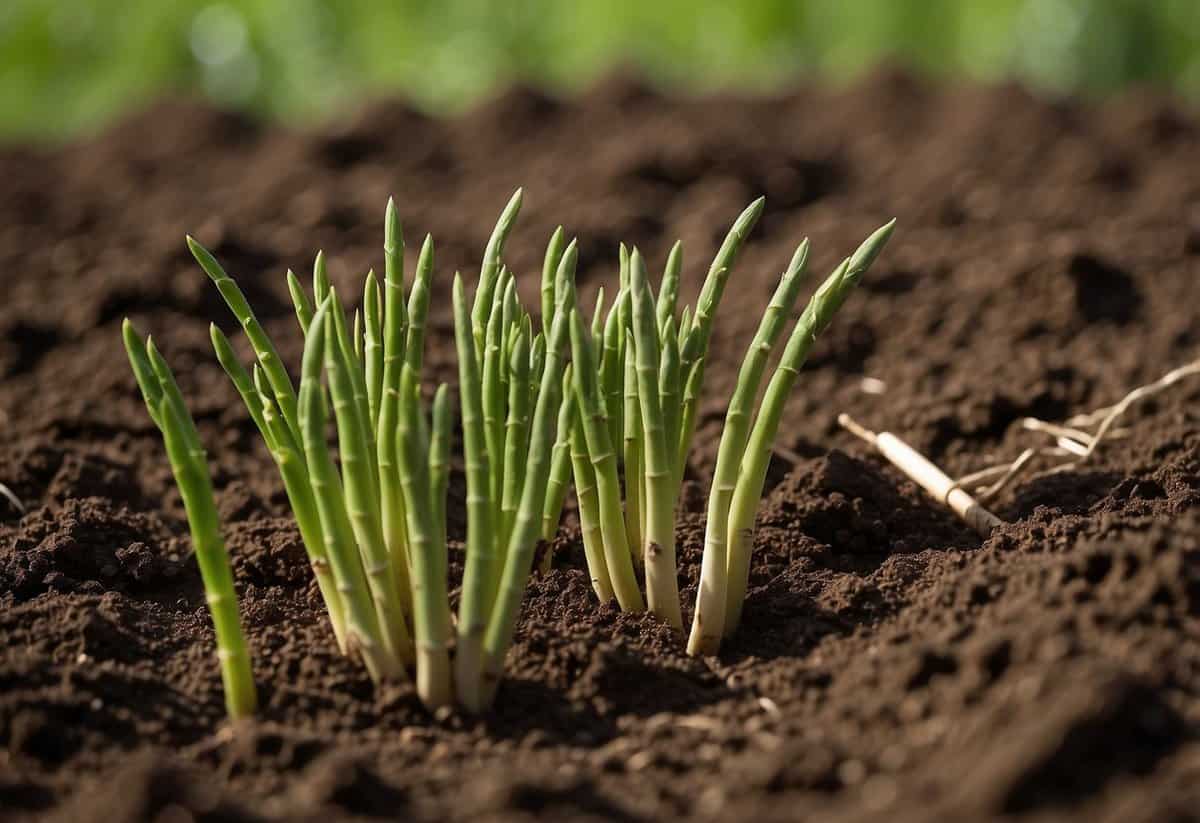Tips on Growing Asparagus in My Garden: A Friendly Guide
Growing asparagus in your garden can be a rewarding experience. It’s a perennial vegetable, meaning it will come back year after year, providing you with fresh spears each spring. With the right care and a bit of patience, you can enjoy a bountiful harvest of this delicious and nutritious vegetable.

In this article, you’ll find simple tips to help you get started with planting and maintaining your asparagus bed. Whether you’re a seasoned gardener or a beginner, you’ll discover useful advice that will lead to a successful and thriving asparagus crop.
1) Choose the Right Location

Pick a spot in your garden that gets 6-8 hours of sunlight each day. Asparagus needs plenty of sunshine to grow well.
Make sure the soil is well-drained and fertile. This helps the roots grow strong and healthy.
Avoid planting in areas where water collects. Too much water can harm the plants.
2) Prep Your Soil

Start by choosing a spot with well-drained, sandy soil. Clear away any weeds and their roots.
Dig a trench 6 inches deep and 12-18 inches wide. Add well-composted manure or compost to the soil.
If possible, test your soil and amend it as needed for the best growing conditions. Keeping the soil moist during planting helps ensure good root growth.
3) Select Quality Crowns

To grow strong asparagus, start with good crowns. Quality crowns are key to a healthy harvest.
Look for crowns that are plump and firm. They should be about one to two years old.
Avoid any that look dry or shriveled. Fresh crowns will give your garden the best chance to thrive.
4) Plant in Spring

You should plant asparagus as soon as the ground can be worked in spring, ideally between March 15 and April 15.
Start by digging a trench that is 12 to 18 inches wide and about six inches deep.
Place the crowns in the trench, spacing them 9 to 12 inches apart, making sure the bud side is up.
For more details, check out the guide on how to successfully grow asparagus.
5) Water Regularly

Asparagus needs consistent watering, especially in the first two years. Aim for 1 to 2 inches of water per week.
Early morning is the best time to water your asparagus plants. Avoid watering in the evening to prevent fungal growth.
Using mulch can help keep the soil moist. Mulch with straw or grass clippings around the plants.
6) Mulch Generously

Mulching is vital for growing healthy asparagus. It keeps the soil moist, reduces weeds, and adds organic matter. Use materials like straw, wood chips, or compost.
Apply a thin layer in spring as soon as the soil can be worked. This helps warm the soil and promotes spear growth.
Keep the mulch even and ensure there are no gaps. This way, your asparagus can thrive with less competition from weeds.
7) Keep Weeds Away

Weeds can be a big problem for your asparagus plants. To keep them at bay, hand-pulling is a great option. This method is simple and effective.
You can also use mulching to smother weeds between rows. Just be careful to avoid mulching directly on the asparagus to prevent pest problems.
If the weed problem is severe, consider using a herbicide like Roundup® before the asparagus spears emerge. This can help control weeds without damaging your plants.
8) Control Pests Naturally

To keep your asparagus healthy, focus on natural methods to control pests. One common pest is the asparagus beetle, which can damage your plants. You can manage these beetles by attracting natural predators like ladybugs and birds.
Regularly inspect your plants in the afternoon when the beetles are most active. Removing any beetles you find by hand can also help keep their population under control.
Keeping your garden clean and free of debris will make it harder for pests to thrive. Always aim for safe and non-toxic solutions to keep your asparagus patch pest-free.
9) Fertilize Appropriately

To get the best asparagus harvest, you need to fertilize at the right times.
In early spring, apply a 10-10-10 fertilizer, which has equal parts nitrogen, phosphorus, and potassium.
Make sure the fertilizer does not directly touch the plants. Instead, sprinkle it around the base.
Doing this helps your asparagus grow strong and healthy. You can find more details here.
10) Harvest Correctly

When you see asparagus spears pushing through the soil in early spring, it’s time to start thinking about harvesting.
The best time to pick asparagus is when the spears are about 6 to 10 inches tall. You can either snap them off by bending the spear or cut them with a clean knife just above the soil line.
Make sure to harvest daily during the six to eight weeks of the growing season. This helps keep the spears tender and prevents them from growing too tall and woody.
Understanding Asparagus Growth

Asparagus is a perennial vegetable that requires careful planning and preparation for successful growth. You’ll need to know about its life cycle and the conditions it thrives in.
Asparagus Life Cycle
Asparagus grows from underground crowns. In its first year, it focuses on establishing strong roots. You should not harvest any spears during this time to let the plant build its strength.
By the second year, you may see some harvestable spears, but it’s best to limit picking to just a few to promote stronger growth. By the third year, the plant hits its stride and you can enjoy a full harvest.
Each spear that emerges eventually becomes a fern, which provides energy for next year’s crop. Over the years, the root system expands and becomes more productive, giving you up to 20 years of harvests.
Ideal Growing Conditions
Asparagus needs a sunny spot with well-drained soil. Raised beds work well to ensure good drainage. Plant the crowns 12 inches apart in trenches or furrows that are about 6 inches deep.
Add soil gradually as the plants grow. Asparagus prefers slightly acidic to neutral pH levels, roughly between 6.5 to 7.5.
Regular watering is essential, especially in the early stages. Use compost or fertilizer to enrich the soil with nutrients. Keep the area free of weeds to reduce competition for resources. This careful attention will pay off with a bountiful asparagus harvest year after year.
Planting Tips

Getting started with growing asparagus involves selecting the best variety, preparing the soil correctly, and understanding how to plant crowns and seeds. Follow these steps for a successful harvest.
Choosing the Right Variety
Picking the right variety is important for your climate and soil. Some common varieties include Jersey Giant, Purple Passion, and Mary Washington. Jersey Giant is known for its high yield and disease resistance. Purple Passion offers a sweeter taste and unique color. Mary Washington is a reliable standard with good productivity.
Choose a variety that matches your local climate. Check if the variety you want is hardy in your growing zone and fits your taste preferences. This helps ensure a good asparagus crop.
Preparing the Soil
Begin soil preparation by ensuring it is well-draining and rich in organic matter. Asparagus prefers a pH between 6.5 and 7.5. Test your soil and amend it with lime if needed to raise the pH or sulfur to lower it.
Incorporate compost or well-rotted manure into the soil. This adds nutrients necessary for healthy growth. Additionally, mix in a balanced fertilizer before planting.
Clear away any weeds and debris from the planting area. A weed-free bed helps young asparagus plants establish quicker and compete less for nutrients and water.
Planting Crowns and Seeds
You can plant asparagus from seeds or crowns. Crowns are the roots of one-year-old plants and establish quicker. Seeds need to be started indoors about 12-14 weeks before the last frost. Transplant seedlings outdoors after the danger of frost passes.
To plant crowns, dig a trench 12-18 inches wide and 6-12 inches deep. Place crowns 12-18 inches apart with buds facing up, covering with about 2 inches of soil. As shoots grow, gradually fill the trench with more soil until it is level with the ground.
For seeds, plant them 1/2 inch deep in rows 12-18 inches apart. Thin seedlings to 12-18 inches apart once they are a few inches tall. Regular watering and weeding at this stage is crucial for healthy plants.
Following these planting tips ensures your asparagus will have a strong start and lead to a great harvest.
Maintenance and Care

Caring for your asparagus involves regular watering, fertilizing, and keeping pests and diseases in check. Attention to these details ensures healthy growth and a bountiful harvest.
Watering and Mulching
Asparagus needs consistent moisture, especially during the growing season. Water your asparagus beds deeply once a week, ensuring soil stays moist but not waterlogged. During dry spells, increase watering to twice a week.
Apply a layer of mulch around your plants to retain moisture and suppress weeds. Use organic mulch such as straw, grass clippings, or compost. Mulching not only helps in moisture retention but also adds vital nutrients to the soil as it breaks down, promoting healthier growth.
Fertilizing Schedule
Asparagus benefits from a well-planned fertilizing schedule. In early spring, before shoots appear, apply a balanced fertilizer, such as 10-10-10, to provide essential nutrients. Spread the fertilizer evenly over the bed and water it in well.
During the growing season, side-dress with compost or a nitrogen-rich fertilizer, like blood meal, once or twice. This promotes healthy fern growth, which is crucial for root development. After the harvest, a final feeding helps the plants store energy for the next season.
Pest and Disease Management
Asparagus is relatively hardy but can fall victim to pests and diseases. Common pests include asparagus beetles and aphids. Check plants regularly and remove pests by hand, or use insecticidal soap if infestations are severe.
To prevent diseases like rust or root rot, ensure good air circulation and avoid waterlogging the soil. Crop rotation and proper spacing can also reduce disease risk. If you notice signs of disease, remove affected plants promptly to prevent spread and maintain a healthy garden.







